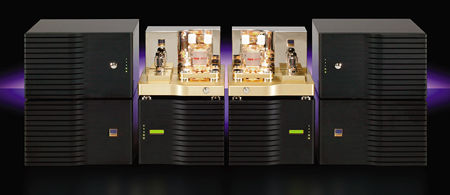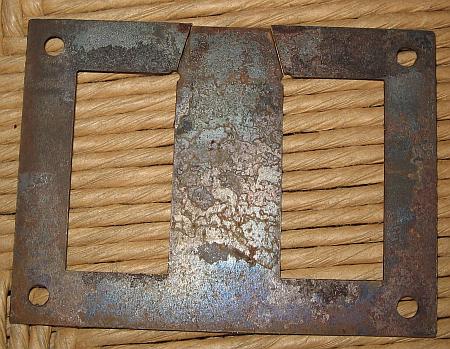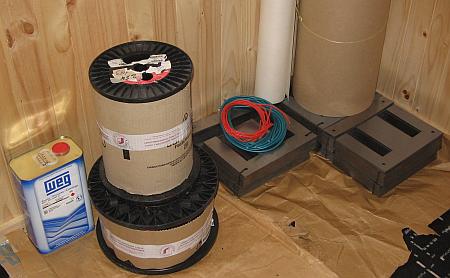Deep Bass in Small Spaces: A Bookshelf Transmission Line Project
In the world of DIY audio, some pairings feel like destiny. The purity of a single full-range driver, free from the complexities of a crossover, is one such siren call. The other is the transmission line (TL) enclosure, an "acoustic labyrinth" promising bass that is deep, articulate, and devoid of the common boominess of ported boxes. But what happens when you try to merge these two ideals into a compact, bookshelf-friendly form factor? This is where the real magic—and the real challenge—begins. We're embarking on a journey to design a bookshelf TL speaker around a common full-range driver with a resonant frequency (Fs) of 55 Hz. It's a quest to defy physics and coax profound bass from a small space.
There is an example for a bookshelf transmission line speaker as below.
The Dream Team: Full-Range Drivers and Transmission Lines
For many audiophiles, the combination of a full-range driver in a transmission line enclosure is the pursuit of an ideal. A single driver handles the entire frequency spectrum, eliminating the phase shifts and sonic discontinuities that can be introduced by crossover networks. The result is often described as a remarkably coherent and life-like soundstage. The transmission line complements this by tackling the most significant challenge for any small driver: low-frequency reproduction. Instead of simply trapping or crudely venting the driver's rear sound wave, a TL guides it down a long, damped path. As one source puts it, the goal is to take this back wave, invert its phase, and use it to reinforce the front wave, extending the bass response cleanly and powerfully .
The 55 Hz Conundrum: Quarter-Wavelength vs. The Bookshelf
Here's where our 55 Hz driver throws down the gauntlet. The foundational principle of a classic transmission line is the "quarter-wavelength rule." To get the exiting back wave in phase with the front wave at the driver's resonant frequency, the line's length should be one-quarter of that frequency's wavelength. Let's do the math.
The speed of sound in air is approximately 344 meters per second. The wavelength (λ) for our 55 Hz target is 344 m/s ÷ 55 Hz, which equals about 6.25 meters. A quarter of that is roughly 1.56 meters (about 5.1 feet). Now, the problem is obvious: how do you fit a five-foot-long pipe inside a box that can reasonably be called a "bookshelf" speaker? The answer lies in clever acoustic engineering: folding the line intricately within the cabinet, like a maze, and the strategic use of damping material.
Taming the Labyrinth: The Art and Science of Damping
An empty, folded pipe would be an acoustic disaster, creating a series of unwanted resonances, or "pipe organ" effects, that would ruin the sound. This is where damping material—the "soul" of the design—comes in. Stuffing the line with materials like long-fibre wool, polyester batting (Poly-fil), or acoustic foam serves two critical purposes.
First, it acts as a low-pass filter, absorbing the upper-bass and midrange frequencies of the back wave. This ensures that only the very lowest frequencies, which are less affected by the damping, emerge from the line's terminus, preventing coloration and smearing of the stereo image.
Second, and crucially for our bookshelf design, the damping material effectively slows the speed of sound within the line. This acoustic trick means a physically shorter line can be tuned to a lower frequency. The exact amount and density of stuffing is a delicate balancing act; too little and you get resonances, too much and you choke the bass output entirely. This is why TL design has historically been a process of painstaking trial and error, as noted by many DIY builders on forums like diyAudio.
From Blueprint to Box: Practical Design Choices
With the core principles in mind, let's move from theory to the practicalities of the build.
The Heart of the Matter: Choosing the Right Driver
Our starting point is a driver with an Fs of 55 Hz. But other Thiele-Small (T/S) parameters are just as important. For transmission lines, drivers with a low total quality factor Qts), typically below 0.4 or 0.5, are often preferred as they have better internal damping and control. A driver like the Tang Band W5-2143, with an Fs of 55 Hz and a Qts of 0.38, is an excellent real-world candidate for this project . The driver must also have a rigid cone to handle the air load of the long line without deforming.
Shaping the Sound: Line Geometry and Tapering
The shape of the line itself is a key design variable. While a constant cross-section line is simplest, many modern designs employ a tapered line that narrows from the driver towards the port. This tapering can help to suppress higher-order harmonics and smooth the overall frequency response. The initial cross-sectional area of the line is typically chosen to be between one to three times the driver's cone area (Sd), providing a good starting point for simulations.
The Exit Strategy: The Port and MLTLs
In its purest form, the end of the transmission line is simply an open terminus. However, a popular and highly effective variation is the Mass-Loaded Transmission Line (MLTL). As described by resources like Neurochrome, an MLTL is essentially a quarter-wave enclosure that also incorporates a tuned port. This hybrid design blurs the line between a pure TL and a bass-reflex box, allowing the port to act as a resonator to further shape and extend the low-frequency output, offering another layer of tuning flexibility.
The Modern DIY Advantage: Simulation Before Sawdust
For decades, designing a successful TL was a dark art. Pioneers like Perry Marshall, who derived his own mathematical models in the 1990s out of frustration with the lack of tools, highlight the historical difficulty . Today, the landscape has been transformed by powerful and accessible software.
The work of pioneers like Martin J. King, whose MathCad worksheets became a foundational resource for the DIY community, demystified the process . More recently, software like SpicyTL, which runs on the free LTspice circuit simulator, has provided an even more modular and intuitive way to model complex TL geometries, including tapering and damping effects . These tools allow you to simulate the entire system—driver, enclosure, and stuffing—and predict the frequency response with remarkable accuracy, turning what was once guesswork into a repeatable engineering process.
Conclusion: A Sound That Breathes
Designing a bookshelf transmission line speaker around a 55 Hz full-range driver is an ambitious project, but it is far from impossible. It represents a fascinating intersection of acoustic theory, clever packaging, and artistic tuning. By leveraging modern simulation tools to navigate the complexities of line length, folding, and damping, today's DIY builder can overcome the physical constraints of a small enclosure.
The reward for this effort is not just a speaker, but an experience. It's the satisfaction of creating a compact system that delivers a low-frequency performance of remarkable depth, clarity, and texture—a sound that, as its most ardent fans would say, doesn't just rumble, but truly breathes.






